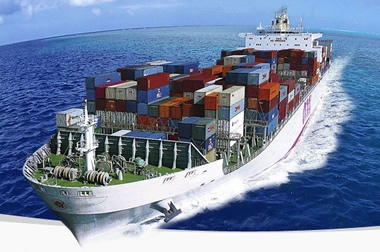
Why is the shipbuilding industry so difficult in South Korea?
May 7, 2018 source: China Ship news Author: China ship network
STX shipbuilding ocean is struggling to end the court management process, Hyundai Heavy Industry has started to lay off workers, Samsung heavy industry has issued additional shares due to lack of funds Why does the shipbuilding industry of Korea, a powerful shipbuilding country, become so difficult?
The sudden attack of the crisis caused the "order cliff" to be severely damaged
Although South Korea now uses the term "export products" in the booming semiconductor industry, in the 1990s and the first few years of the 20th century, it is still the "exclusive term" of the shipbuilding industry.
In May, 11 years ago (2007), South Korea's shipbuilding industry exported a record $4.9 billion that month. In those years, the Korean shipbuilding industry once occupied 40% of the global shipbuilding market share, and six Korean shipbuilding enterprises ranked among the top ten shipbuilding enterprises in the world.
Although at that time China pursued with 33% and Japan with 25% market share, it still could not be compared with "shipbuilding power Republic of Korea".
However, the good situation of South Korean shipbuilding industry came to an abrupt end in 2008. This year, the international financial crisis triggered by the U.S. subprime mortgage crisis began to impact the global export economy. The shipbuilding industry was affected, and the shipbuilding power of South Korea was not spared. In 2007, the order volume of new ships in South Korea was 5252; by 2008, it was reduced to 3381; by 2009, it was even less, only 1258.
In the case of a substantial reduction in demand, the increasing number of shipbuilding enterprises is also a problem that the Korean shipbuilding industry has to face. In 2005-2006, when the shipbuilding industry was booming, the orders for new ships had not yet been concentrated in large-scale shipbuilding enterprises, and the shipbuilding price had skyrocketed. Many enterprises rushed to "the shipbuilding industry that can print money", and small and medium-sized shipbuilding enterprises in South Korea and middle-sized countries mushroomed.
However, just at this time, the economy quickly fell into a difficult period, the situation of the whole shipbuilding industry deteriorated sharply, and the sudden decrease of orders opened the "Pandora's box" of low-cost competition in the shipbuilding industry. Therefore, the crisis of shipbuilding industry is caused by the continuous expansion of inconsistent supply and demand in the large cycle of economic decline.
Transfer to offshore engineering, the market develops first, then restrains, and then suffers another blow
Due to the sharp decrease of global ship market demand, most of South Korean shipbuilding enterprises have to seek alternative livelihood. Shipbuilding industry is a labor-intensive industry, without orders, which means tens of thousands of workers can not get wages, and soon there will be a large army of unemployment. The business pressure and enterprise turbulence make Korean shipbuilding enterprises turn their attention to the offshore engineering equipment market quickly.
In 2008, when orders for new ships began to plummet, world crude oil prices soared, fluctuating around $100 a barrel. Oil prices are rising, and investors in oil field development are increasing. As long as the crude oil price exceeds 50-60 US dollars, the offshore equipment industry is regarded as a "profitable business", and both the buyer and the seller are constantly increasing their investment.
To be sure, over a period of time, the surge in orders for offshore engineering equipment offset the impact of the sharp decline in ship orders on Korean shipbuilding enterprises.
However, as orders for new ships are affected by global economic and trade demand, orders for offshore engineering equipment are closely related to oil prices. In 2014, the oil price began to drop sharply, from $115 / barrel to nearly $50 / barrel, and enterprises that ordered a large number of offshore engineering equipment began to cancel orders or require delayed delivery for various reasons.
In the design and construction of offshore engineering equipment, Korean shipbuilding enterprises mainly have the capacity of general assembly and construction of offshore engineering equipment, and a large number of supporting equipment of offshore engineering equipment need to be purchased from foreign enterprises. Ocean engineering equipment costs a lot of money. It often costs hundreds of millions of dollars to order a large-scale equipment.
In order to build these marine engineering equipment, ship enterprises have invested a lot of money. If they don't deliver them on time, the burden of labor cost and financing cost will be like snowball. In 2015 and 2016, these losses were truthfully reflected in the books of various Korean shipbuilding enterprises.
Modern heavy industry, Samsung Heavy Industry and Daewoo shipbuilding ocean, the "three giants" of South Korea's shipbuilding industry, also set a deficit record of trillion won in this round of "entrepreneurship". The demand for offshore equipment continues to decrease, and to make matters worse, the oil price keeps falling and the shipbuilding industry in South Korea has been further impacted.
End of depression, spring after winter?
The serious depression of shipbuilding industry has had a huge impact on the labor relations of ship enterprises. Modern heavy industry, Samsung heavy industry, Daewoo shipbuilding ocean are located in Juji and Weishan area, which have greatly reduced the number of employees. In Weishan area alone, the number of people insured for employment insurance decreased from 61000 in 2013 to 38000 in August 2017; in the same period, the number of people insured for employment insurance in Juji area decreased from 93000 to 81000.
At present, the great depression, which began to spread in 2008, has come to an end in all respects.
According to the research of Clarkson research company in the UK, the global trade volume shows an upward trend. It is estimated that in the next 10 years, the annual ship trade volume will reach 120 billion US dollars, more than three times of the global new ship orders in 2016.
At the same time, with the disappearance of many small and medium-sized shipbuilding enterprises, the global shipbuilding capacity decreased by 40% compared with 2012. For the Korean shipbuilding industry, which has survived the harsh winter, spring is approaching quietly.
Source: Ricky, editor in charge of China Ship news
| 上一條:The service spirit of our company's business philosophy is "treat each other sincerely, serve with heart"... | 下一條:Shenzhen Shengya International Logistics Co., Ltd. was founded in 2012... |










 +86-755-25860956
+86-755-25860956 中文
中文 English
English 日本語
日本語